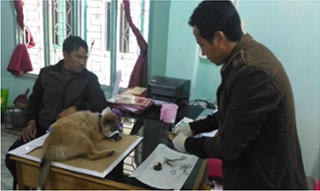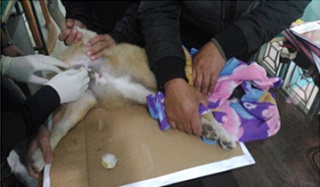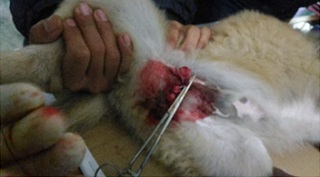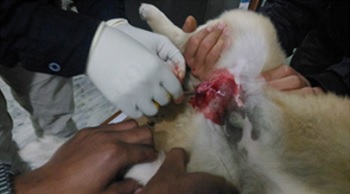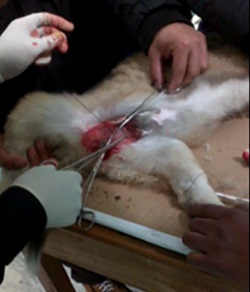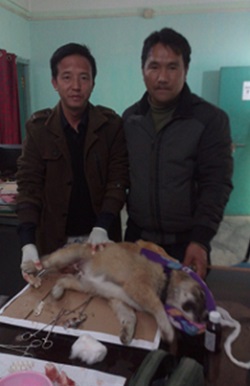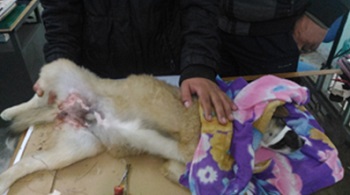Castration in Dog: A case report KVK Anjaw
A visitor in KVK, Anjaw office came with a 4 months old male dog for castration with a chief complain that as a companion animal he wants to keep a dog but during attainment of sexually maturity age, especially during breeding season male dog often escape from house to outside for mating, during that period it is very difficult to manage and keep them in control and confined area. It is a common observation that often dog fight during mating season and there is great risk of transmission of rabies virus from one infected dog to healthy dog, which is great threat in terms of security health point of view for pet owner, general public and for dog itself. To avert this untoward concern castration is the ideal method to address these problem and SMS-Animal Science intervention is necessary in this regards.
Accordingly I have accept his request and purchased medicine from Tezu, as medicine is not available in Anjaw.
Following line of preoperative, during operation and postoperative care were taken.
- Dog was physically examine for any abnormalities and disease
- As a preventive measure dog was under antibiotic coverage for 3 days prior to operation
- On the day of operation pet owner was asked to keep the dog on fast from early mooring and not to feed anything except water.
- Xylazine was used as sedative agents @ 1.5mg/kg BWT. I/M.
- Pelvic area in and around scortum, hair was clipped and shaved then painted with tincture iodine to disinfectant the area.
- Operation instrument i.e Artery and tissue forceps etc. were sterilized by boiling in cooker and rinsed in tincture iodine prior to use.
- Local anesthetic agent lignocaine was infiltrated in the area of incision and directly into two testicle to desensitize the area.
- Left testicle was slightly pushed towards abdomen from scrotal sac and incision was made just near scortum towards abdomen on the point of left testicle. Slowly layer after the incision was made, first skin is cut then layer covering testicle and ultimately testicle is exposed outside by gently application of pressure through cut mark. The vas deferens (spermatic cord), pampiniform plexus (vessels around the vas deferens), cremaster muscle, and arterial supply are clamped with artery forceps from both the side and strong ligation is applied with catguard (suture material), in the middle of clamped spermatid cord to prevent blood flow from either end, then spermatid cod is cut with BP blade near the point of tourniquet towards testicle to separate from rest of body. Cut end of large blood vessel and spermatid cord is crossed checked for bleeding and tincture iodine is applied before releasing the free end into the cavity.
- Similarly right testicles is removed from the same incision opening following similar sets of steps and procedure.
- Skin is sutured with black bedded suture material to apposed the skin and early healing of surgical wound.
- T.T injection of 0.5ml I/M was given as a preventive dose against tetanus.
- Postoperative care:
- Antibiotic continue for another 5 days
- Dressing of wound on alternate day with tincture iodine.
- Skin suture to be removed on 5th days of surgery.
Fig1: Preparation prior to castration & waiting for anesthesia action Fig 2: Shaving the hair with BP blade Fig 3: After giving incision , applying pressure to push out testicle Fig 4: Clamping the large blood vessel and spermatic cord Fig 5: Ligating the large blood vessel and spermatic cord Fig 6: Suturing the Skin
Fig 7: Cleaning the area after suturing Fig: 8 After complete operation Fig 9: Handing to the owner after sucessful operation
